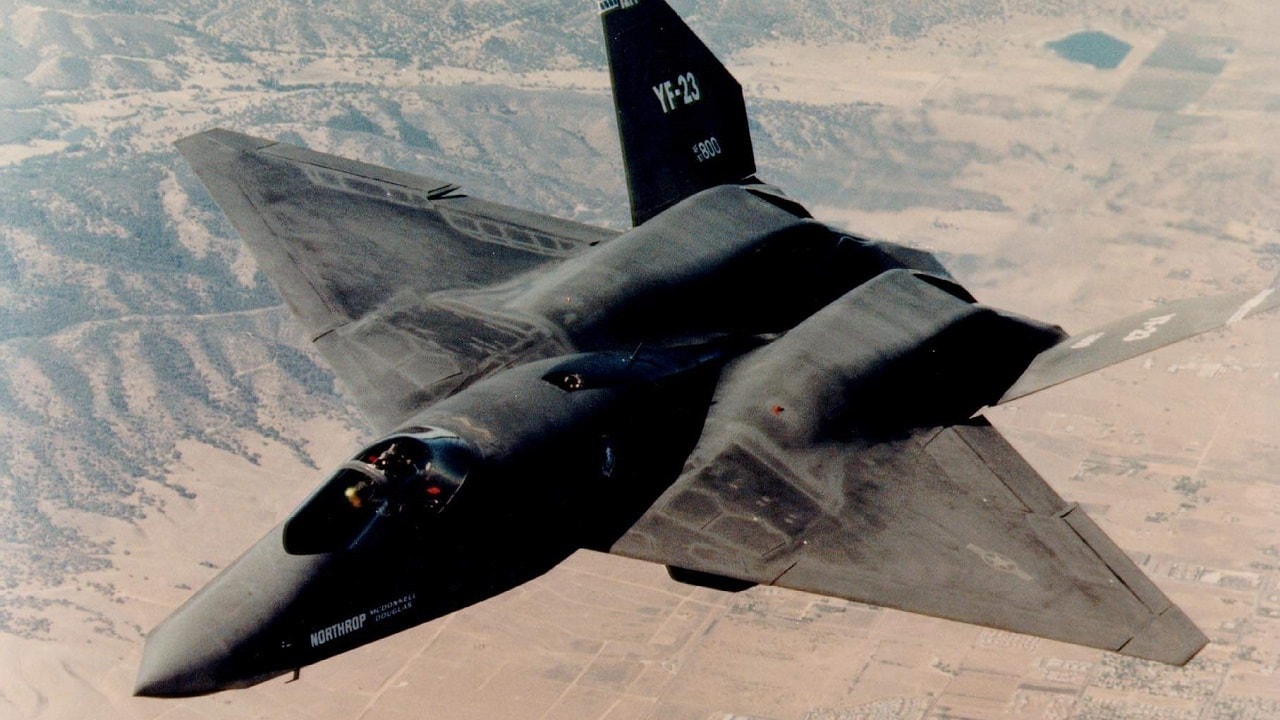Following years of research and design planning, the U.S. Air Force has come up with an estimate of how many unmanned aerial vehicles (UAVs) will fly alongside the service’s Next-Generation Air Dominance (NGAD) stealth combat jets. Around 1,000 UAVS, or collaborative combat aircraft, are set to accompany the 200 fighters expected to fly in the program.
For many years, the NGAD project seemed more theoretical and far-fetched. However, now the public has a better sense of the full scale and scope of the vision.
In a keynote address earlier this month, Air Force Secretary Frank Kendall said that the numbers were derived from an assumed two CCAs per 200 NGAD platforms and an additional two for each of 300 F-35s for a total of 1,000,” adding that the CCAs “will not impact planned fighter crew inventory.”
Kendall has prioritized the incorporation of drones into the Air Force’s future fleet to combat emerging threats across the globe.
The origins of the Air Force NGAD program
Although the NGAD project is still in its preliminary phase, the Air Force’s latest announcement indicates the sixth-generation fleet may come sooner than some analysts expected. The intended goal of the program was to develop and produce a “family of systems” able to succeed Lockheed Martin’s F-22 Raptor fighter.
Back in 2014, the NGAD program was initially conceptualized following the release of the Air Dominance Initiative study. For the next two years, DARPA launched the Aerospace Innovation Initiative to develop a potential prototype for the project. The program emphasized several critical technologies needed in a sixth-generation airframe, including stealth, propulsion and advanced weapons.
The NGAD program has largely been kept under wraps since it is a highly classified project.
However, over the last year Secretary Kendall has made several significant announcements regarding the program. Over the summer, the Air Force Secretary said that the NGAD was undergoing a “Milestone B” review process, marking the completion of the program’s technology maturation phase and the commencement of an acquisition program. As explained by Defense News, this phase occurs “when the service takes its preliminary design and focuses on system integration, manufacturing processes and other details ahead of production.”
Since 2018, the Air Force has invested more than $2.5 billion in the NGAD program and is likely to spend much more over the next few years as the program progresses. Secretary Kendall had previously claimed that the service was doing whatever it could to keep costs minimal, including the incorporation of interfaces already in use by the military to minimize complete upgrades. Drones are typically much cheaper than fighter jets, another area where the service could reduce costs.
Kendall also made assurances that the addition of drone wingman would not impact the number of crewed fighters in the Air Force’s inventory since the UAVs would be considered external weapons or electronic warfare pods.
“The CCAs will complement and enhance the performance of our crewed fighter force structure,” Kendall stated, adding that “CCAs will dramatically improve the performance of our crewed aircraft, and significantly reduce the risk to our pilots.”
Although the Air Force is likely still years away from obtaining its sixth-generation NGAD future fleet, the service is clearly taking steps in the right direction to achieve the project by the estimated 2030’s deadline.
MORE: PAK DA – Is Russia New Stealth Bomber a Joke?
MORE: Was the F-14 Tomcat Retired Too Early?
MORE: Nimitz-Class – The Best Aircraft Carrier Ever?
Maya Carlin is a Senior Editor with 19FortyFive. She is also an analyst with the Center for Security Policy and a former Anna Sobol Levy Fellow at IDC Herzliya in Israel. She has by-lines in many publications, including The National Interest, Jerusalem Post, and Times of Israel.

